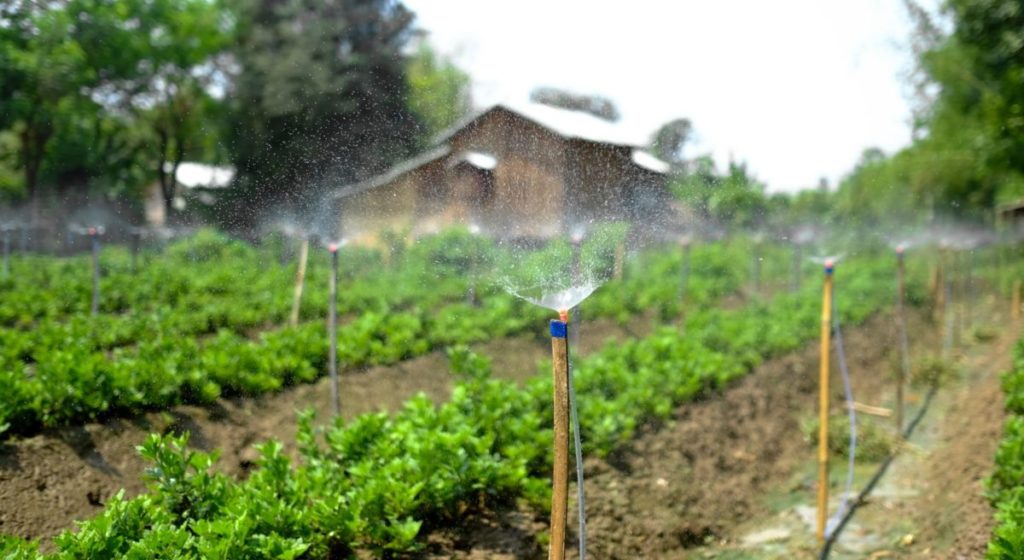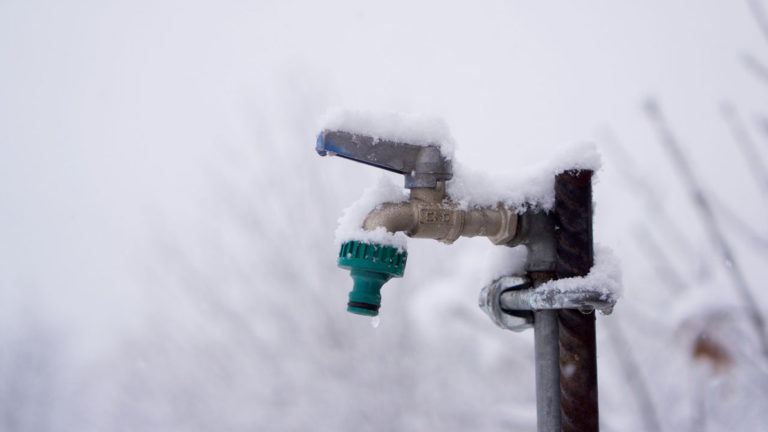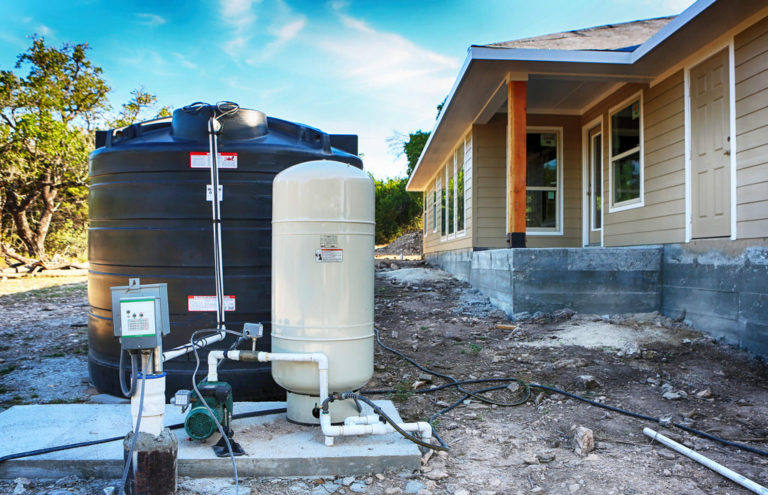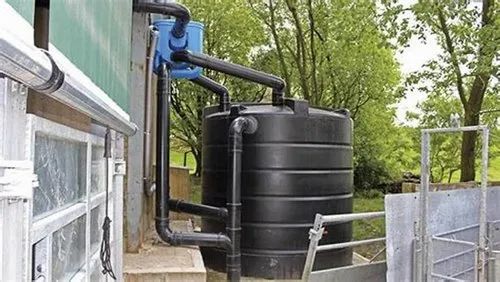Irrigation automation is a revolutionary technology that offers numerous benefits for self-sufficient water management.
With the ability to regulate water flow and pressure remotely, farmers and gardeners can save time, reduce waste, and increase crop yields.
Automated systems also provide real-time monitoring of soil moisture levels, allowing users to make data-driven decisions about irrigation schedules and crop care.
Automation can help mitigate the risk of water damage and optimize water usage, resulting in significant cost savings over traditional manual irrigation methods.
Whether you’re a small gardening enthusiast or a large-scale farmer, investing in an irrigation automation system can have a profound impact on your crop yields and bottom line.
Increased Efficiency
Irrigation automation systems can help farmers and growers optimize water use by precisely applying the right amount of water at the right time, reducing waste and conserving this valuable resource.
These systems use advanced technology to precisely apply the right amount of water at the right time, taking into account factors such as soil type, crop type, weather conditions, and evapotranspiration rates.
This results in reduced water waste and improved crop yields, as the plants receive the exact amount of water they need to grow and thrive.
Irrigation automation systems can help farmers and growers identify and address any leaks or other issues in their irrigation systems, further reducing water loss and optimizing the use of this precious resource.
Overall, irrigation automation systems offer a powerful tool for farmers and growers looking to maximize their water use and improve the sustainability of their operations.
Cost Savings
By avoiding overwatering and reducing labor costs associated with manual irrigation, automated systems can help reduce overall expenses.
Automated irrigation systems can help you save money on your water and labor costs.
By avoiding overwatering, these systems can ensure that your plants receive only the exact amount of water they need, reducing waste and conserving water.
Automated systems can reduce the need for manual irrigation, which can be a time-consuming and labor-intensive task.
With automated systems, you can save money on labor costs by not having to pay employees or contractors to manually water your plants.
In fact, a study by the University of Florida found that automated irrigation systems can save up to 50% on water costs alone, while also reducing labor costs by up to 75%.
By investing in an automated irrigation system, you can save money on your water and labor expenses, all while ensuring that your plants receive the optimal amount of water they need to thrive.
Improved Crop Health
Precise irrigation management can lead to healthier crops, as plants receive the correct amount of water at the appropriate time, promoting optimal growth and yields.
With the integration of precision irrigation techniques into modern agriculture, crops can enjoy improved health and productivity.
By precisely managing irrigation, farmers can ensure that plants receive the exact amount of water they need at the appropriate time, which promotes optimal growth and yields.
Precise irrigation allows for better control of water and nutrient distribution, ensuring that crops are receiving the correct amount of moisture and nutrients to thrive.
This, in turn, can lead to healthier crops with increased resistance to pests and diseases.
Precise irrigation management can help farmers identify and address any issues related to soil moisture, salinity, or nutrient deficiencies, leading to even healthier and more productive crops.
By adopting precision irrigation techniques, farmers can experience improved crop health, higher yields, and reduced water consumption, ultimately increasing profitability and sustainability.
Better Yields
With automated irrigation, farmers can optimize crop growth, leading to increased yields and profitability.
With automated irrigation, farmers can optimize crop growth, leading to increased yields and profitability.
By using precision irrigation techniques, such as drip irrigation and sprinkler systems, farmers can deliver the exact amount of water and nutrients their crops need, when they need it.
This ensures that crops are receiving the optimal amount of water and nutrients to support healthy growth, resulting in higher yields and improved crop quality.
Automated irrigation systems can be programmed to adjust water distribution based on weather conditions, soil moisture levels, and crop requirements, allowing farmers to respond to changes in their crops’ needs in real-time.
By implementing automated irrigation systems, farmers can save time, reduce labor costs, and improve their bottom line while also ensuring the sustainability of their farming practices.
Water Conservation
By monitoring and controlling water usage, automated irrigation systems can help conserve water, reducing the environmental impact of farming.
By investing in automated irrigation systems, farmers can significantly reduce their water consumption and mitigate the environmental impact of their farming practices.
These systems utilize advanced technologies such as sensors, GPS, and weather monitoring to optimize irrigation schedules and deliver the precise amount of water needed for their crops.
This results in a more efficient use of water resources, minimizing waste and runoff.
In fact, according to a study by the University of California, automated irrigation systems can save up to 20% of the water used for irrigation, which can add up to a considerable amount of water savings over the course of a growing season.
Furthermore, by minimizing water waste and runoff, automated irrigation systems can help to prevent soil erosion, maintain soil health, and reduce the risk of waterborne diseases.
By taking these steps, farmers can not only reduce their environmental impact but also improve the overall health and productivity of their crops.
Reduced Labor
With automated irrigation systems, farmers and growers can reduce the amount of manual labor required for irrigation management, freeing up time and resources for other tasks.
With automated irrigation systems, farmers and growers can significantly reduce the amount of manual labor required for irrigation management, effectively freeing up time and resources for other important tasks.
By automating the process, farmers can save hours, if not days, of work that would have been spent on manually monitoring and controlling irrigation systems.
This includes tasks such as checking soil moisture levels, adjusting water pressure, and scheduling irrigation cycles.
Moreover, automated irrigation systems can be programmed to adjust water distribution according to specific crop requirements, ensuring that plants receive the exact amount of water they need at the right time.
This precision watering leads to improved crop health, increased yields, and reduced water waste.
By adopting automated irrigation systems, farmers can maximize their efficiency, minimize labor costs, and focus on other essential aspects of their operations.
Improved Precision
Automated irrigation systems use advanced technologies like sensors, GPS, and weather data to deliver precise irrigation management, reducing the risk of over- or under-watering.
With the integration of advanced technologies like sensors, GPS, and weather data, automated irrigation systems can provide precise irrigation management, reducing the risk of over- or under-watering.
These sensors and monitoring systems collect data on soil moisture levels, temperature, humidity, and other factors to determine the exact amount of water required by the crops.
This data is then used to adjust the irrigation schedule accordingly, ensuring that the crops receive just the right amount of water at the right time.
GPS technology can help to precision-map the fields, allowing the automated system to pinpoint the exact location of water sources and application points, further reducing waste and improving efficiency.
By using advanced technologies to gather real-time data and make informed decisions, automated irrigation systems can improve crop yields, reduce water consumption, and minimize the need for manual labor and intervention.
Scalability
Automated irrigation systems can be scaled up or down depending on the needs of the farm or garden, making them suitable for a range of applications from small backyard gardens to large commercial farms.
Automated irrigation systems can be tailored to meet the specific needs of any farm or garden, regardless of its size.
Whether you’re looking to water your small backyard garden or your large commercial farm, these systems can be easily scaled up or down to accommodate your requirements.
With a range of options for controllers, sensors, and sprinklers, you can choose the components that best fit your needs and budget.
For example, if you have a small garden, you might need only a basic controller and a few sensors to monitor soil moisture and temperature.
In contrast, a large commercial farm might require more advanced features such as weather monitoring, crop-specific watering schedules, and remote access capabilities.
By choosing an automated irrigation system that can be scaled up or down as needed, you can ensure that your plants receive the perfect amount of water every time, regardless of the size of your operation.
This flexibility and adaptability make automated irrigation systems an excellent investment for any farmer or gardener looking to optimize their watering needs.
Site-Specific Conditions
Factors like soil type, topography, and climate should be considered when selecting an automated irrigation system to ensure optimal performance.
Site-specific conditions play a critical role in determining the type of automated irrigation system that will work best for your farm or garden.
Factors such as soil type, topography, and climate can greatly impact the performance of the system, and ignoring these factors can lead to inefficient water use, crop stress, or even crop failure.
For example, if your soil is sandy and well-draining, a drip irrigation system may be more appropriate to ensure that water is delivered directly to the roots of the plants.
On the other hand, if your soil is heavy clay and prone to waterlogging, a sprinkler or flood irrigation system may be more suitable to avoid overwatering and root rot.
The topography of your land can also affect the placement and installation of the irrigation system, such as the need for hills or valleys to be irrigated separately.
The climate of your area will also influence the type of irrigation system you choose, as certain systems may be more suitable for specific temperature and humidity ranges.
By considering these site-specific conditions when selecting an automated irrigation system, you can ensure optimal performance and the health and productivity of your crops.
Water Source
The availability and quality of the water source should be evaluated to determine the appropriate irrigation method and ensure efficient use of resources.
The water source is a important factor to consider when choosing an irrigation method.
The availability and quality of the water source will determine the type of irrigation method that is most suitable for the specific crop or landscape.
For example, if the water source is a limited supply of rainwater, a drip irrigation system may be more appropriate to minimize waste and maximize water efficiency.
On the other hand, if the water source is a plentiful supply of clean water, a sprinkler system may be more effective in providing uniform coverage and adequate watering.
The quality of the water source should also be evaluated to ensure that it does not contain any harmful contaminants that could damage the plants or the irrigation system.
For instance, if the water source is contaminated with high levels of salt or other minerals, a filtration system may be necessary to remove these impurities before irrigating the plants.
Overall, evaluating the availability and quality of the water source is a critical step in selecting the most appropriate irrigation method for a specific crop or landscape.
Energy Efficiency
Automated irrigation systems should be designed to optimize energy efficiency, reducing the environmental impact and operating costs.
Automated irrigation systems play a vital role in optimizing energy efficiency, reducing environmental impact, and minimizing operating costs.
By incorporating energy-saving technologies and designing systems with energy-efficient components, farmers can significantly reduce their energy consumption and lower their carbon footprint.
Some of the key features of energy-efficient automated irrigation systems include
* Using low-voltage and energy-efficient pumps and motors
* Implementing timers and sensors to optimize water application and reduce waste
* Installing solar-powered or wind-powered systems to minimize reliance on non-renewable energy sources
* Utilizing smart irrigation technologies that adjust water application based on weather conditions, soil moisture levels, and crop water requirements
* Implementing water-saving technologies such as drip irrigation or mulching to reduce water loss and increase water efficiency
By adopting these energy-efficient technologies, farmers can not only reduce their energy consumption and operating costs but also contribute to a more sustainable future for generations to come.
System Maintenance
Regular maintenance of the automated irrigation system is essential to ensure proper function and longevity, as well as preventing waterborne diseases.
Regular maintenance of the automated irrigation system is important to ensure proper function and longevity, as well as preventing waterborne diseases.
The system’s components, such as pipes, pumps, and sensors, can accumulate dirt, minerals, and other contaminants over time, which can clog or corrode these parts and lead to malfunctions.
Regular cleaning and replacement of filters and other components can help prevent these issues and maintain the system’s efficiency.
Regular inspections of the system can help detect and address any leaks or other issues before they become major problems.
Furthermore, proper maintenance can help prevent the growth of harmful bacteria and other microorganisms in the water, which can cause waterborne diseases.
By performing regular maintenance, you can ensure that your automated irrigation system continues to function properly and safely for years to come.
Monitoring and Control
The system should be designed with monitoring and control capabilities to enable timely adjustments and maintenance, ensuring optimal water use and crop health.
Monitoring and control are critical components of an effective agricultural water management system.
The system should be designed with monitoring and control capabilities to enable timely adjustments and maintenance, ensuring optimal water use and crop health.
This includes sensors and data loggers to track soil moisture, temperature, and other important parameters.
Real-time monitoring allows farmers to make adjustments to water application, fertilizer application, and crop management based on changing conditions.
Control systems can be used to adjust water flow and pressure, ensuring that the optimal amount of water is being used at all times.
Control systems can be integrated with automation systems to perform routine maintenance tasks, such as cleaning and calibrating sensors, to ensure that the system is functioning at its best.
By continuously monitoring and controlling the system, farmers can ensure that their crops are receiving the right amount of water at the right time, leading to improved yields and crop health.
Sustainability
Automated irrigation systems should be designed with sustainability in mind, minimizing waste and using locally sourced materials where possible.
When designing and implementing automated irrigation systems, it is important to consider sustainability at every stage.
This involves minimizing waste and using locally sourced materials where possible.
By doing so, the environmental impact of the system is significantly reduced, as it requires fewer resources and energy to operate.
Using locally sourced materials helps support the local economy and reduces transportation costs, which further contribute to the system’s sustainability.
Moreover, sustainable automated irrigation systems can help reduce water waste, as they are designed to efficiently distribute water exactly where and when it is needed.
This not only saves water but also reduces the amount of energy required to pump and transport it.
By prioritizing sustainability in the design and implementation of automated irrigation systems, we can create a more environmentally friendly and cost-effective solution that benefits both the environment and the community.
Adaptability
Automated irrigation systems should be adaptable to changing site-specific conditions and weather patterns to ensure optimal crop health and water usage.
Adaptability is a important feature of an effective automated irrigation system.
As site-specific conditions and weather patterns constantly change, a flexible and adaptive system is essential to ensure optimal crop health and water usage.
For example, an automated system can monitor soil moisture levels, temperature, and humidity, and adjust water delivery accordingly.
This adaptive capacity enables the system to optimize water use and prevent overwatering or underwatering, which can lead to reduced crop yields or wasted resources.
Moreover, an adaptive system can adjust irrigation schedules based on predicted weather patterns, providing proactive management to minimize the impact of extreme weather events such as droughts or floods.
By incorporating advanced technologies like machine learning and real-time data analysis, an adaptable automated irrigation system can continuously improve its performance and ensure the health and productivity of crops.
Cost-Benefit Analysis
A thorough cost-benefit analysis should be performed before implementing an automated irrigation system to determine the feasibility and potential return on investment.
Performing a comprehensive cost-benefit analysis is a important step before implementing an automated irrigation system.
This evaluation should consider all relevant costs and benefits to determine the feasibility and potential return on investment of the proposed system.
To begin with, the costs associated with implementing an automated irrigation system include the initial purchase price of the equipment, installation expenses, and any necessary upgrades to the existing water delivery infrastructure.
Ongoing costs such as energy consumption, maintenance, and repair needs to be factored into the analysis.
The benefits of an automated irrigation system, on the other hand, can include increased crop yields, reduced water waste, improved water distribution, and enhanced monitoring capabilities.
These benefits can lead to increased profitability for farmers and improved resource management.
Moreover, the system can help to minimize labor costs and reduce the environmental impact of traditional irrigation methods.
To conduct a thorough cost-benefit analysis, all relevant factors should be taken into account, including the initial investment, operating expenses, and projected returns over the system’s lifespan.
This will provide a comprehensive understanding of the potential return on investment and help to determine the feasibility of the proposed system.
A detailed cost-benefit analysis is essential for farmers and decision-makers to make informed decisions about implementing an automated irrigation system.
Want More? Dive Deeper Here!
Hey there! If you’re the type who loves going down the rabbit hole of information (like we do), you’re in the right spot. We’ve pulled together some cool reads and resources that dive a bit deeper into the stuff we chat about on our site. Whether you’re just killing time or super into the topic, these picks might just be what you’re looking for. Happy reading!
- Irrigation and Technology Assessment | UGA Cooperative Extension
- HS1144/HS388: Drip-Irrigation Systems for Small Conventional Vegetable Farms and Organic Vegetable Farms
- Irrigation for Fruit and Vegetable Production
- Factors to Consider in Selecting a Farm Irrigation System | UGA Cooperative Extension
- (PDF) Small Acreage Irrigation Guide






